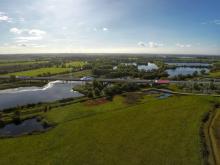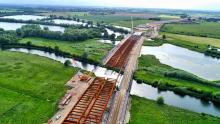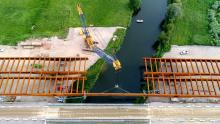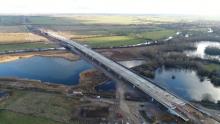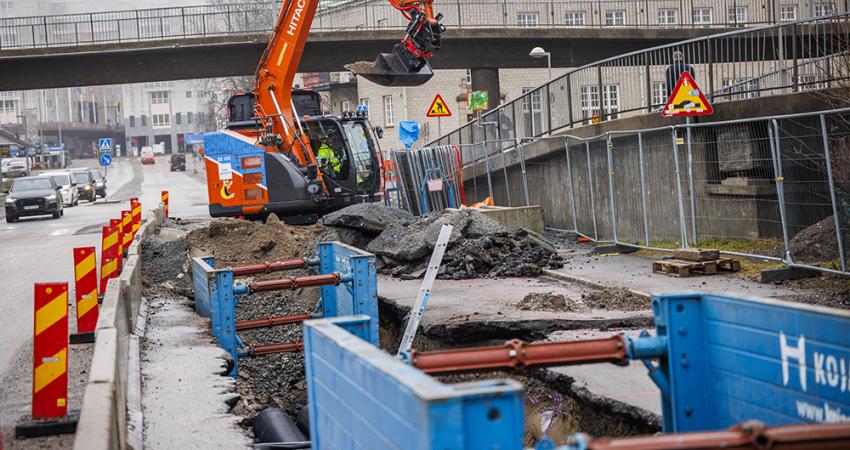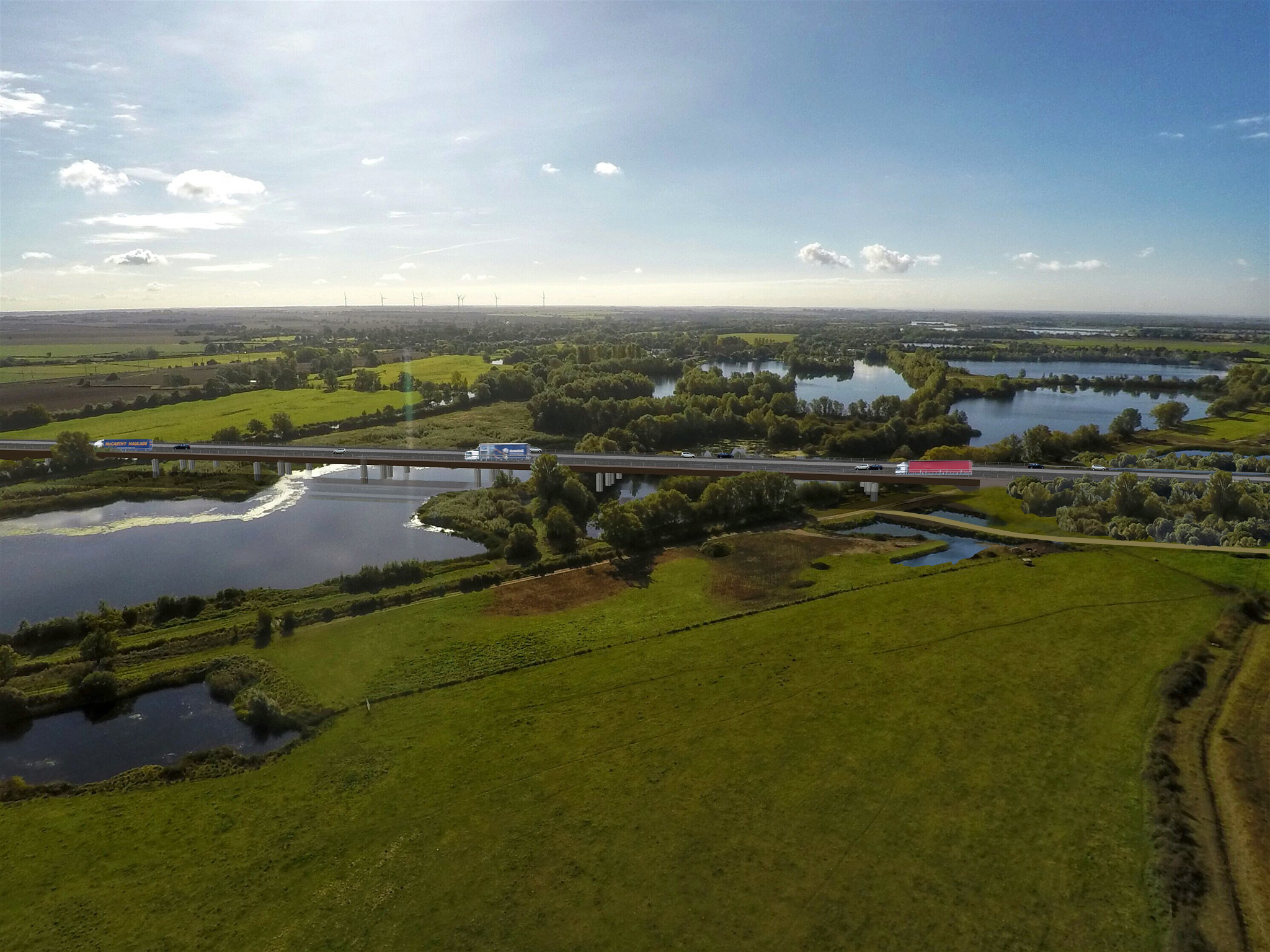
Road construction workers often find interesting buried items when building roads and the UK’s A14 Cambridge to Huntingdon improvement scheme is proving the point. It’s been less than half a year since construction started on the €1.76 billion A14 scheme,
Even before main construction started in November 2016, the archaeological team began its work following extensive surveys and trial trenching. The team identified important archaeological remains dating from the prehistoric period through to the Romano-British and medieval periods.
“The trial trenching identified some 350ha of land that our archaeologists would need to look at,” says Chris Griffin, Highway England’s A14 project manager. “Most of the remains show evidence of settlements or industrial activity, including a well-preserved series of Romano-British pottery kilns, some carving tools and even the remains of a cow.”
Above ground, yellow diggers are now a familiar sight along the A14 corridor in Cambridgeshire county, says Griffin. “The narrow lanes, temporary speed limits, cones and barriers we’ve installed allow workers to build accesses for construction traffic and carry out vegetation clearance ahead of the bird nesting season while keeping disruption on the road to a minimum and keeping road users safe.”
Only overnight lane or carriageway closures - if absolutely necessary - are used. “For instance, if we need to install signs or barriers, carry out pavement surveys or strengthen the carriageway where heavy machinery will need to cross on a regular basis.”
CCTV cameras along the A14 manage disruption to road users from a dedicated control room within the scheme’s main compound. “This helps us to stay aware at all times of conditions on the road and to take measures quickly if things don’t go to plan,” he says.
Construction of the viaduct
A significant part of the scheme is a new bypass, including a viaduct over the River Great Ouse, which will run south of Huntingdon. Because it is being built away from the existing A14, road users suffer no disruption other than plant occasionally crossing local roads while travelling along the new construction haul roads.
“Work on this section of the project is progressing well and to schedule. Building the 750m-long River Great Ouse viaduct, which will carry the new A14 across the flood plain and river, is a complex task. The first step has been to install a 52tonne capacity pontoon bridge to allow fully laden dump trucks site access. “This pontoon is allowing us to install a temporary bridge so we can start building the viaduct itself,” explains Griffin.
Construction of the foundations and columns for the viaduct is also under way, with plans for later this year to start installing the steelwork that supports the bridge deck and start casting the 800 concrete panels needed for the viaduct.
Excavations will be taking place across the scheme throughout 2017 and the team is planning on presenting findings to the local community once the archaeological work is finished. All the felled trees are used as biomass for energy production locally and more trees will be replanted when the project nears completion.
Some disruption, though, has been caused to a local community. Endangered water voles at Alconbury Brook will be rounded up and moved into a nearby newly constructed habitat this spring.
Construction by numbers
• 3 main compounds have been built
• 3.3km of temporary safety barriers installed along the A14, A428 and A1
• 9 earthworks teams are stripping
topsoil along the offline section of the project
• 128 piles have been installed, using nearly 8,000m³ of concrete to create foundations for 5 bridges with foundations for another 23 bridges scheduled
• 6 solar-powered light towers are being trialled for night work
• 42km of temporary barriers installed along the offline section of the project, away from the current road
• 6km of offline haul roads allow construction traffic to move within the site without adding pressure on public roads
• 2km of utility cabling and pipes have been diverted, with another 100km still to come

